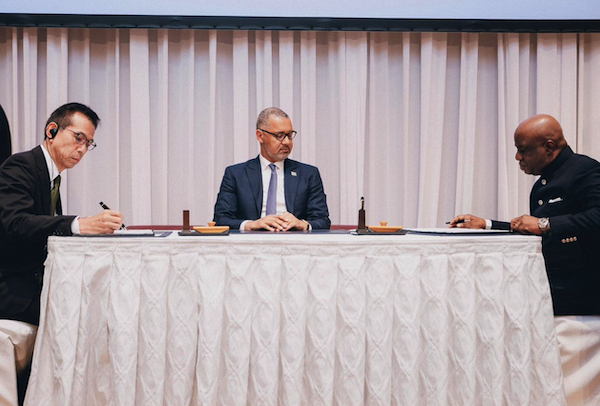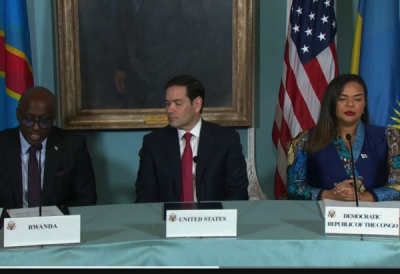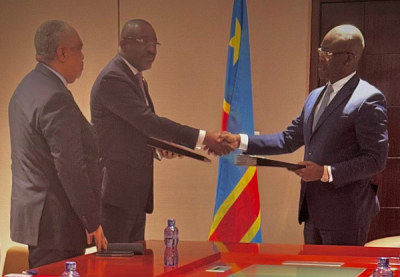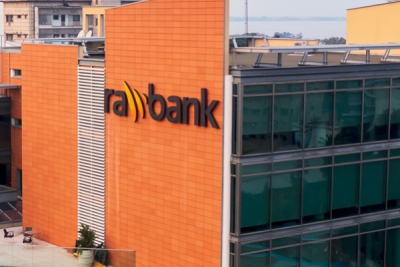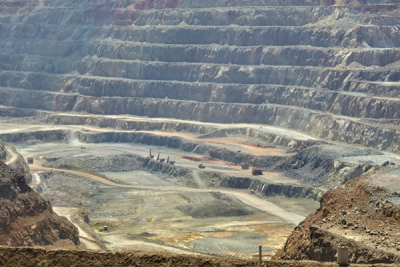
News (571)
Asia Mineral, a Japanese mining company, has moved to expand its footprint in the Democratic Republic of Congo. On June 28, 2025, it signed a memorandum of understanding (MoU) with Congolese firm Kerith Resources to form a joint venture named Kivuvu Kongo Mines. The new company will mine and process manganese in Kongo Central province.
The deal was signed during the DRC-Japan Economic Forum in Tokyo under the theme “Investing in the DRC.” Prime Minister Judith Suminwa Tuluka led the Congolese delegation, joined by several government officials.
According to Actualité.cd, Felly Samuna, president of the Kongo Central Chamber of Commerce and Industry, confirmed the joint venture will be officially established in the province within two weeks. Asia Mineral will hold 60% of the venture, and Kerith Resources, a Congolese partner with limited public profile, will hold the remaining 40%.
Uncertain Reserves, Clear Intentions
Kivuvu Kongo Mines plans to tap into manganese reserves in Kongo Central. However, officials have not confirmed the site’s full potential. Asia Mineral began the exploration phase in Luozi territory in May.
At a Tokyo press conference, Foreign Trade Minister Julien Paluku said the project’s initial investment stands at $50 million. He said the company aims to produce 2 million tonnes of manganese annually.
The project could generate 2,500 direct jobs and stimulate local industries, including logistics, industrial subcontracting, and services.
For the Congolese government, the venture supports its broader strategy to diversify the mining sector. Officials aim to attract more partners, explore new minerals, expand mining areas, and promote local processing to increase the value of extracted resources.
This article was initially published in French by Ronsard Luabeya (intern)
Edited in English by Ange Jason Quenum
The provincial customs office of Kongo Central has announced upcoming public auctions for goods left unclaimed at its facilities, following the deadlines set by national regulations.
According to a June 20 statement, the auctions concern items recorded in customs storage but not retrieved within the legal two-month period, as stated in Article 288 of the Customs Code.
The customs authority, known as DGDA, identified 174 importers whose goods are affected. They have been asked to settle their cases at least 48 hours before the auctions begin. Failure to do so will result in their merchandise being sold publicly.
The auctions, scheduled for July, will include a wide range of products such as vehicles, metal sheets, LED lamps, primary form polypropylene, bridge components, footwear, and paint products. The DGDA has not yet provided details on participation procedures.
The process will follow Articles 283 to 289 of the amended Customs Code and will take place in three phases. The first phase is set for July 7 to 12 at the Matadi-Beach office, the second from July 15 to 21 at the AIDEL/TICOM office, and the final phase from July 23 to 28 at the MGT office.
Congolese Foreign Minister Thérèse Kayikwamba Wagner and her Rwandan counterpart Olivier Nduhungirehe signed a peace agreement on June 27, 2025, in Washington. The deal aims to end the deadly conflict in eastern Democratic Republic of Congo. The ceremony took place at the U.S. Department of State, with U.S. Secretary of State Marco Rubio present.
Both Kinshasa and Kigali are hailing the agreement as "historic," describing it as a "major step toward lasting peace" and a "decisive advance toward ending the conflict." U.S. Secretary of State Marco Rubio called it "an important moment, after thirty years of war," though he cautioned that "much remains to be done." The real challenge now lies in effectively implementing the agreement to restore peace in the Great Lakes region.
“The DRC is committed to fully implementing this agreement and building a prosperous future for its citizens,” Thérèse Kayikwamba Wagner said. Her Rwandan counterpart reaffirmed Rwanda’s commitment to honor the terms of the deal and work toward sustainable peace.
The agreement builds on the Declaration of Principles signed on April 25, 2025. It reiterates key tenets: respect for sovereignty, non-interference, an end to support for armed groups, joint security coordination, the return of refugees, support for MONUSCO, and the promotion of regional economic integration.
This article was written in French by PM,
Edited in English by Mouka Mezonlin
The Congolese state has secured a 10% stake in Buenassa Resources SA, the subsidiary developing the Democratic Republic of Congo’s first copper and cobalt refinery. Minister of State Portfolio Jean-Lucien Bussa and Buenassa Resources CEO Eddy Kioni signed the memorandum of understanding on June 25.
Buenassa stated that this 10% stake is a golden share. While minority, it gives the government veto rights over strategic decisions affecting national interests, such as employment, taxes, local content, environmental issues, and the company’s overall strategy. To formalize this, Buenassa Resources changed its legal status from a limited liability company to a public limited company with a board of directors that now includes state representatives.
This agreement, described as a “strong signal to partners and investors,” opens the door for fundraising. Internal sources said Buenassa aims to raise $7 million to $8 million for the project’s feasibility study. The Congolese government has already contributed $3.5 million through the Industry Promotion Fund (FPI) to finance the initial scoping study.
The scoping study estimates the first phase of the project will cost $600 million. The refinery, expected to start operations by the end of 2027, should initially produce 30,000 tonnes of copper cathodes and 5,000 tonnes of cobalt sulfate each year. Ultimately, Buenassa plans to increase production to 120,000 tonnes of copper and 20,000 tonnes of cobalt annually.
The 12-month feasibility study will detail the project’s technical and economic plan, including the plant’s supply model. Officials are considering two options: using the state’s share of mining output or cobalt quotas reserved for local processing. The government reiterated during the Council of Ministers meeting on March 14, 2025, its commitment to better regulate cobalt exports and encourage domestic processing.
Buenassa’s management plans to start the feasibility study by September. However, they still need to secure a final site. They have identified a potential plot in Lualaba province, but the location remains unconfirmed.
Pierre Mukoko, Intern
• Rawbank’s revenue rose 6.2% to $514 million, with net profit up 11.4%
• Loan portfolio expanded by 34%, and a $400 million mining syndication was completed
• Strong growth in digital services, SME financing, and green initiatives across the DRC
Rawbank, the leading financial institution in the Democratic Republic of Congo (DRC), demonstrated its ability to combine performance, digital innovation, and social commitment in 2024, despite a challenging economic environment.
According to its annual report released on June 18, 2024, Rawbank recorded steady growth in both revenue and profitability, driven by a strategy centered on diversification, digitalization, and sustainable finance. The bank also successfully rolled out several innovative and inclusive financing solutions to support the national economy.
Net banking income, equivalent to revenue, reached $514 million, marking a 6.2% increase from 2023, supported by dynamic commercial activity and effective margin management. Net profit totaled $212.7 million, an 11.4% rise. These results reflect a return on equity (ROE) of 32.99% and a return on assets (ROA) of 3.43%. The bank’s capital adequacy ratio, aligned with international standards, stood at 20.44%, confirming its strong financial position and ability to meet growing financing needs while maintaining strict risk management.
International Syndicated Loan for Mining Sector
Total gross loans grew by 34% to $2.08 billion, driven by strong demand and a balanced credit policy. Deposits rose by nearly 20%, reaching $4.74 billion, reflecting renewed trust from both individuals and businesses. The loan-to-deposit ratio improved to 43.85%, showing healthy balance sheet management. Operating expenses accounted for 52.36% of income, while the cost of risk, based on net non-performing loans, remained low at 0.47%, highlighting effective risk control.
In 2024, Rawbank achieved a strategic milestone by completing a $400 million syndicated loan to finance the third development phase of the Kamoa-Kakula copper mine in Lualaba province. Organized with Africa Finance Corporation, Absa, and FBN Bank, the deal underscores Rawbank’s ability to structure large-scale international financing. It strengthens the mining sector, a key pillar of the Congolese economy, and positions Rawbank as a major player in high-impact infrastructure financing.
The report also highlighted the success of the “20,000 SMEs” program, launched with the Financial Inclusion Fund (FPM). In 2024, loans to small and medium-sized enterprises (SMEs) increased by 46.3%, reaching $225 million. The program targets sectors such as mining subcontracting, telecommunications, and agribusiness, promoting financial inclusion and access to credit for Congolese entrepreneurs.
Digital Transformation Gains Momentum
Rawbank’s Illicocash app, central to its digital strategy, recorded 1.5 million monthly visits in 2024, with transactions up 75% compared to 2023. The bank’s network of banking agents expanded to over 1,000 active service points nationwide. New features were added to meet the needs of connected customers, including receiving international transfers via Remitly, Xoom, and PayPal.
The bank also advanced its sustainable finance initiatives, mobilizing $22 million between 2023 and 2024 to support the green transition. Notable projects include a $2 million investment in improved cookstoves to reduce six million tons of CO₂ over ten years and a reforestation program in Idiofa, Kwilu province. Rawbank also integrated a carbon footprint calculator into the Illicocash app, enabling clients to track their environmental impact in real time.
Financial inclusion and equal opportunity remain central to Rawbank’s mission. The Lady’s First program now supports over 2,000 women entrepreneurs, while the She Leads initiative enabled nine female employees to reach management positions in 2024. Additionally, the Rawtalents program welcomed more than 25 young graduates to develop the next generation of leaders in the DRC’s banking sector.
“The dedication of our teams since 2002 continues to deliver results, with a renewed ambition to make Rawbank more than just a bank, but a driver of sustainable transformation for the DRC,” said Isabelle Lessedjina, Chair of the Board. CEO Mustafa Rawji added, “The 2024 results confirm the strength of our model built on efficiency, diversification, and innovation. They reflect renewed client trust and our commitment to actively supporting Congo’s economic transformation.”
Local communities in the Democratic Republic of Congo (DRC) were deprived of $198 million between 2018 and 2023. This shortfall resulted from underreporting, partial payment, or non-payment of the mandatory minimum allocation of 0.3% of turnover by mining companies. A report from the Court of Auditors revealed these findings, highlighting issues in the management of funds intended for community development projects in mining areas.
Published in June 2025, the audit specifically found discrepancies between revenues mining companies reported to the DOTS, the entities managing the allocation, and figures declared to the Directorate General of Taxes (DGI). This deliberate underreporting led to a $154.7 million deficit over the audited period.
Additionally, some companies made only partial payments, accumulating an outstanding balance of over $40.4 million. Others made no payments at all, creating an additional shortfall of $2.8 million.
Major companies implicated in the report include Kamoa Copper (Ivanhoe Mines and Zijin Mining), Kamoto Copper Company (Glencore), Sicomines (Crec-Sinohydro-Zhejiang), and Tenke Fungurume Mining (CMOC).
The Court of Auditors recommends that the Supervisory Committee order the affected companies to regularize their payments or face sanctions, potentially including the suspension of operations for gross misconduct. However, the report expressed regret over the lack of action by successive Ministers of Mines. It also called for establishing a systematic verification mechanism for turnover figures between the DGI and the DOTS.
This article was written in French by Boaz Kabeya (intern),
Edited in English by Mouka Mezonlin
U.S. based Hydro-Link is leading a $1.5 billion project to build a 1,150 kilometer electricity transmission line connecting Angola and the Democratic Republic of Congo (DRC). The company announced the project at the 17th U.S. Africa Business Summit, hosted by the Corporate Council on Africa, currently underway in Luanda, Angola.
While Hydro-Link remains relatively unknown, its Chief Executive Officer, Paul Hinks, has more than four decades of global experience in developing, financing, and operating power infrastructure. To advance the project, the company is partnering with the Swiss-headquartered Mitrelli Group.
In a joint statement released on June 23, the two firms announced they had signed a memorandum of understanding (MoU), the first of three agreements considered crucial for bringing the project to fruition. A second MoU with the Angolan government was expected to be signed on June 24. Talks are also ongoing with Congolese authorities, according to the Financial Post.
Strong U.S. Footprint
Mitrelli, which has operated in Angola for decades, will serve as both an investor and a strategic partner. The group will provide "end-to-end expertise, from project development and financing to on-the-ground execution," the statement said.
To cover approximately 70% of the project’s cost, Hydro-Link is seeking funding from the U.S. International Development Finance Corporation (DFC). The firm is also seeking support from the U.S. Trade and Development Agency for feasibility studies, and additional backing from the U.S. Export-Import Bank.
This extensive American involvement underpins what Hydro-Link describes as the project’s "strong U.S. footprint." The company plans to source major components from U.S. manufacturers. This is a departure from the industry norm of procuring equipment elsewhere for African infrastructure projects. To that end, it has already signed an MoU with sister company Sargent & Lundy, an energy engineering firm that will serve as owner’s engineer and independent consultant.
Powering the Mining Sector
The line is expected to be operational by 2029, delivering up to 1.2 gigawatts of electricity from Angola’s Lauca hydropower plant and other sources. The energy will supply the Kolwezi mining region in the DRC, targeting companies such as Glencore and Ivanhoe Mines, and potentially new U.S. entrants under a "minerals-for-security" agreement currently under negotiation between Kinshasa and Washington.
Hydro-Link’s initiative marks the third Angola-DRC interconnection project, alongside ventures led by Moroccan group Somagec and a Trafigura-ProMarks consortium. All aim to export Angola’s surplus power to the DRC.
According to the African Development Bank, Angola currently has 1.5 gigawatts of unused clean hydropower capacity, a figure expected to rise to 3.5 gigawatts by 2027. Meanwhile, the DRC’s persistent energy shortages continue to stall the development of key mining projects.
This article was initially published in French by Pierre Mukoko & Ronsard Luabeya
Edited in English by Mouka Mezonlin
The Equity BCDC inter-union has accused the bank of preparing a large-scale, disguised layoff, set to affect nearly 460 employees, which is about 27% of its total workforce at the end of 2023. This accusation appears in a letter dated June 17, 2025, addressed to the Minister of Labor, Ephraim Akwakwa Nametu.
The dispute began after an internal communication on June 6 stated that the parent company, Kenya-based Equity Group Holdings (EGH), suspects these employees of fraud following an internal investigation.
The bank’s management plans to launch a "rigorous and exemplary" disciplinary process, citing a zero-tolerance policy on fraud. However, the unions claim the bank ignored repeated requests for key information—such as the code of conduct, the full list of accused employees, the investigation period, and the alleged fraud amount—before taking action.
Despite receiving no clear answers, the bank reportedly sent explanation requests to the targeted employees starting June 10. In a June 12 letter to Equity BCDC, the inter-union condemned the bank’s "hasty" and "war-like" tactics. This is why the unions are appealing to the Minister of Labor to prevent what they consider to be a purge operation.
Rising Social Tensions
Since January 30, 2025, Equity BCDC and its staff have been in conciliation talks led by the General Labor Inspectorate. This mediation follows the bank’s failure to implement a protocol agreement signed on November 20, 2024, which included retroactive salary alignment from November 1 and the finalization of job classifications.
Unions argue the ongoing disciplinary drive is a maneuver to dodge these social commitments. Equity BCDC’s leadership has not publicly responded in the Democratic Republic of Congo. Earlier in June, Equity Group CEO James Mwangi announced a broad internal probe across subsidiaries after losses of roughly 2 billion Kenyan shillings (about $15.4 million) over two years. The losses allegedly stem from internal fraud involving offshore accounts and M-Pesa wallets.
In May 2025, the group notified 1,200 employees in Kenya of their dismissal as part of similar "purges", giving them 48 hours to prove their innocence. Those who failed faced immediate termination with minimal severance—salary up to the last day, one month’s notice pay, and unused leave compensation minus any debts.
This article was initially published in French by Timothée Manoke
Edited in English by Ange Jason Quenum
On June 11, 2025, the Democratic Republic of Congo (DRC) and China signed a memorandum of understanding to expand cooperation in agriculture. The agreement was concluded on the sidelines of the 4th China-Africa Economic and Trade Expo (CAETE) in Changsha, capital of China’s Hunan province. The deal was officially presented on June 20, 2025, during the DRC’s 48th Council of Ministers by Grégoire Mutshail Mutomb, Minister of State for Agriculture and Food Security.
This initial agreement lays the foundation for a future strategic partnership focused on strengthening the DRC’s food sovereignty. It outlines several areas of collaboration, including technical knowledge sharing, development of trade channels for exporting Congolese products, and support for agricultural research through partnerships with Chinese institutions.
The company Modern Agriculture Trading SARL will serve as the technical partner for engaging with China’s Hunan Renjian Woxiang Group to establish bilateral purchasing mechanisms.
Although no implementation timeline was provided, the Council of Ministers has approved the creation of a multisectoral committee to oversee the technical and operational follow-up of the proposed partnership.
This memorandum is part of a series of recent agriculture-related agreements between the DRC and China. In April 2025, a cooperation agreement was signed with Chinese firm Hunan Linshi Agricultural Service Ltd to improve crop and vegetable productivity in the DRC through various initiatives.
In September 2024, the DRC’s Minister of External Trade, Julien Paluku Kahongia, facilitated the signing of a memorandum aimed at exporting more than one million tons of agricultural products from the DRC to China by Congolese producers.
In March 2025, a Chinese delegation visited the DRC’s Ministry of Fisheries and Livestock to begin discussions on a partnership to enable the annual production of five million white-feathered chicks in the country.
The Belgian development agency Enabel announced on June 17, 2025, that it has mobilized €2.7 million (around $3 million) to “sustainably improve” access to financing for entrepreneurs in the Democratic Republic of Congo (DRC). The funding will support a 30-month program implemented in partnership with the Financial Inclusion Fund (FPM ASBL), a multi-donor fund that provides tailored technical assistance to financial institutions serving micro, small, and medium-sized enterprises (MSMEs) and low-income populations.
The initiative aims to develop long-term solutions for inclusive finance and to act as a catalyst for more equitable and participatory economic development. It will focus on strengthening the capacity of financial institutions to tailor their services to the specific needs of entrepreneurs. This includes a particular focus on youth, women, and high-potential SMEs.
In parallel, the program will offer training in business management and financial literacy. This training aims to help entrepreneurs qualify for formal financial services. The program also plans to enhance coordination among local entrepreneurial ecosystem players, with tighter monitoring of partnership initiatives. The program will target six provinces: Kinshasa, Haut-Katanga, Lualaba, Tshopo, Kasaï Oriental, and Sud-Ubangi.
Enabel already operates several initiatives in the DRC to support entrepreneurship. In Lubumbashi and Kolwezi, the Boost Camp program supports 20 SMEs through coaching and training. In Kinshasa, K-Impact assists 100 MSMEs, while Kin Emploi promotes youth employment. In Mbuji-Mayi, the Incubakor initiative backs young project leaders.
Belgium’s 2023 to 2027 bilateral cooperation program with the DRC amounts to €250 million. Enabel is also implementing donor-funded projects worth about €105 million, including funds from the European Union.
Ronsard Luabeya, stagiaire
More...
Kinshasa’s long-awaited central market, known locally as Zando, is finally nearing completion. Governor Daniel Bumba announced during a site visit on June 21, 2025, that the market could reopen in just over three months. He made the visit alongside members of the Provincial Assembly bureau.
Bumba reported that construction work has reached 90% completion. The remaining tasks include finishing 5,000 market stalls and installing septic tanks and boreholes to guarantee the market’s autonomous water supply.
This announcement comes after rising pressure from traders who recently mobilized to demand the reopening of the market. Authorities closed Zando in January 2021 to launch modernization work, a decision that initially triggered widespread public protests.
The central market overhaul stems from a public-private partnership between the city of Kinshasa and French firm Sogema. Construction was outsourced to the Chinese company SZTC. The project is backed by a $44.5 million loan from Sofibanque.
Although initial plans scheduled completion for November 2023, several factors caused delays. Among them were a late project start and complications linked to the development of access roads.
Despite setbacks, the scale of the market remains impressive. Spread over 80,500 square meters, Zando is expected to house 80,000 stalls, 40 cold rooms, 270 toilets, and 22 units for commercial banks. These figures were released in 2024 by former governor Gentiny Ngobila. He also projected the market could create "over 500,000 jobs."
According to the Public Expenditure Observatory (Odep) and the Congolese League Against Corruption (Licoco), the operating contract grants Sogema control of the market for 25 years. They called this duration “arbitrarily fixed, without prior study on financial, economic profitability, or environmental impact.” In contrast, provincial authorities defend the deal. They point to the quality and durability of the infrastructure, which they estimate has a lifespan of 150 years.
This article was initially published in French by Timothée Manoke (Intern)
AVZ Minerals Limited has resumed its arbitration case against the Democratic Republic of Congo (DRC) over the prized Manono lithium deposit, the Australian mining company announced in a statement issued on Tuesday, June 24, 2025.
AVZ had announced on May 26 that it was temporarily suspending proceedings before the International Centre for Settlement of Investment Disputes (ICSID) until June 23. The company stated at the time that this pause aimed to foster "a climate conducive to discussions" in hopes of reaching an amicable resolution. However, that effort collapsed. AVZ now accuses the DRC of refusing to participate in any dialogue during the suspension window. "Despite AVZ’s best endeavors, the DRC did not engage with AVZ during the period of temporary suspension and that suspension has now lapsed,” the firm stated bluntly.
Congolese authorities have not commented on the situation as of yet. Their silence leaves open the question of why negotiations failed, especially since ICSID had confirmed the suspension was mutual and in line with both parties' agreement.
KoBold's Deal Loses Ground
This legal escalation directly threatens the January 21 offer made by American company KoBold Metals. Backed by investors including Bill Gates and Jeff Bezos, KoBold proposed to end the dispute by providing "appropriate compensation" to AVZ, in exchange for AVZ abandoning its claims on Manono in KoBold's favor. The offer initially appeared promising. On May 6, KoBold and AVZ signed a framework agreement, stating that AVZ would transfer its commercial interests in the Manono lithium deposit to KoBold at a fair market value.
However, the agreement carried a major condition: the DRC would need to either grant AVZ a mining permit or formally recognize its rights over the site. Kinshasa has refused to meet that condition, putting the entire KoBold offer on unstable ground. As a result, AVZ saw no alternative but to restart its legal offensive. The company initially brought the case to ICSID in June 2023, and the latest move signals its determination to press ahead.
At the heart of the conflict lies exploration permit PR 13359. AVZ claims legal rights over this portion of the lithium deposit. However, Congolese courts awarded 100% control of the permit to state-owned Cominière, reversing an earlier arrangement where AVZ had co-managed the license through a joint venture with the public enterprise.
American Sponsor's Influence and Geopolitical Stakes
Following that ruling, Cominière formed a new partnership with Chinese conglomerate Zijin Mining, creating Manono Lithium SAS. This joint venture, 61% owned by Zijin (via its subsidiary Jinxiang Lithium) and 39% by Cominière, has obtained an exploitation permit for the northeastern part of the deposit and plans to begin lithium production in the first quarter of 2026.
Parallel to its ICSID case, AVZ is also suing its former partner Cominière before the International Court of Arbitration of the International Chamber of Commerce. This legal battle has already yielded results, with the tribunal ruling in AVZ’s favor and ordering Cominière to pay 39.1 million euros in penalties for non-compliance with prior court orders.
According to AVZ, the temporary pause in arbitration followed a call from the U.S. government, which encouraged both parties to take steps to foster a climate conducive to discussions. This legal and corporate drama unfolds against a backdrop of complex geopolitics. Washington is concurrently negotiating a "minerals for security" agreement with the DRC. Under this proposed deal, the U.S. would offer military and strategic assistance to help stabilize Congo’s eastern provinces. In return, the DRC would grant preferential access to U.S. companies operating in the mining sector.
At the same time, American and Congolese officials are working on a broader peace accord involving the DRC and Rwanda. The signing of both agreements is announced for the end of the month. The DRC’s stance in the AVZ-KoBold case, and its continued silence, raises new questions.
This article was initially published in French by Pierre Mukoko
The Democratic Republic of Congo (DR Congo) has extended its suspension of cobalt exports for another three months as part of efforts to stabilize the market. The decision was announced by the Regulatory Authority for Strategic Mineral Markets (Arecoms) in an official statement dated June 21, 2025.
The export ban, which first took effect on February 22, applies to all cobalt produced nationwide. This includes cobalt from industrial, semi-industrial, artisanal, and small-scale mining operations.
Arecoms stated that the decision is driven by persistently high stock levels in the market. Cobalt prices have also shown signs of weakness in recent weeks, falling from $33,700 per ton on June 2 to $33,250 by market close on June 20.
After the initial announcement of the export ban in February, cobalt prices jumped nearly 60 %, stabilizing around $33,700 per ton in April. Despite the recovery, prices remain well below the market peak of $82,000 per ton seen in 2022.
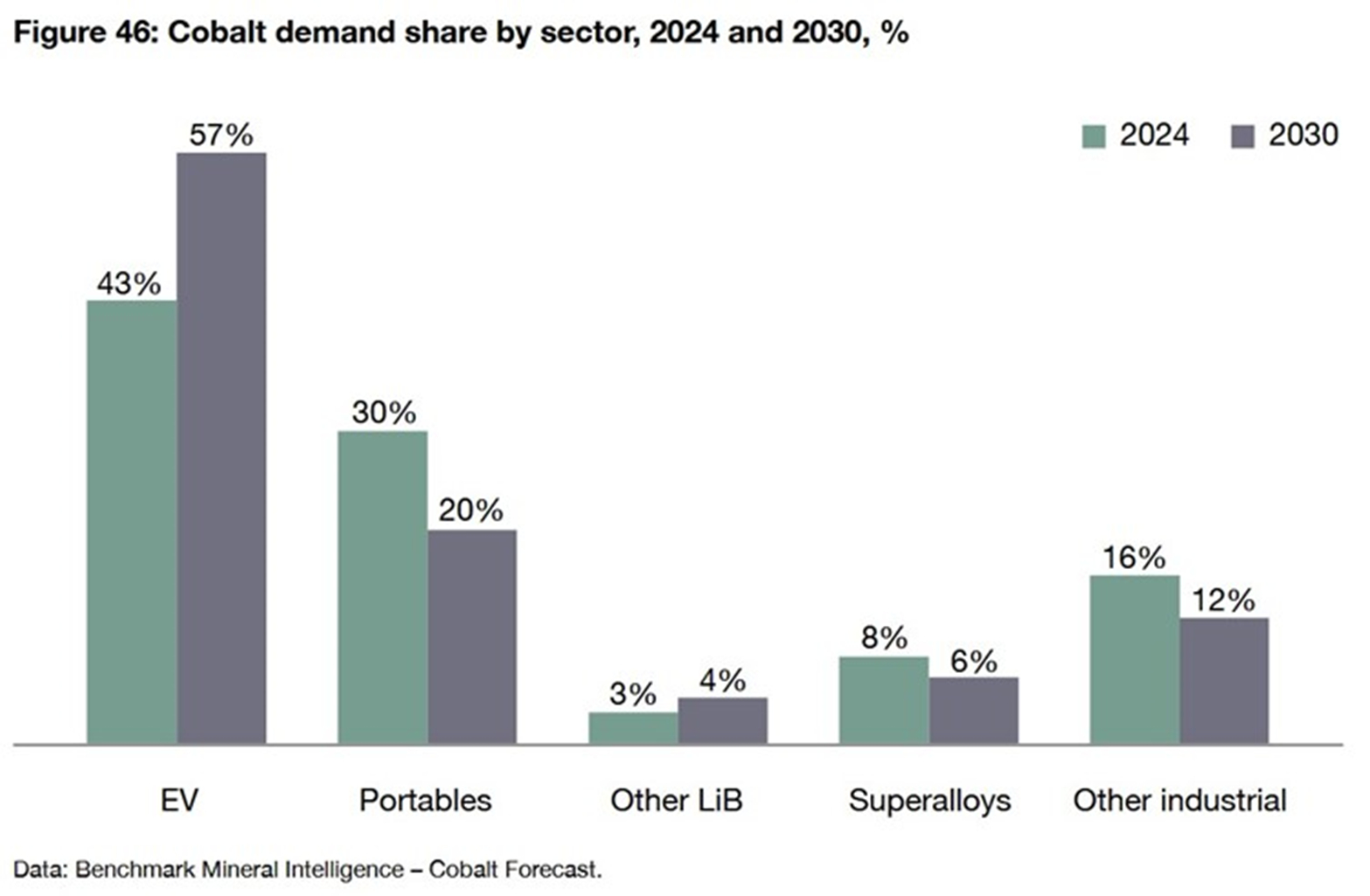
Arecoms noted that the suspension could be extended, adjusted, or lifted at any time, though no specific price target has been set. What is known is that the Congolese government based its 2025 national budget on an average cobalt price of $28,000 per ton, a forecast that remains uncertain given current market conditions.
The government has already signaled its desire to tighten control over cobalt exports. During the Council of Ministers meeting on March 14, 2025, officials expressed plans to introduce export quotas and encourage more local processing of raw materials.
These plans started to take shape on March 26 with the groundbreaking of the Musompo Special Economic Zone. The site is dedicated to producing battery precursors, fully assembled batteries, and potentially electric vehicles using Congolese raw materials.
Upcoming policy decisions could also be shaped by the strategies of major cobalt producers operating in DR Congo. During the Cobalt Congress held in Singapore this May, companies voiced opposing views on the export ban. Chinese mining giant CMOC pushed for the embargo to be lifted quickly, while some traders linked to Swiss-based Glencore argued that Congolese cobalt should only return to the global market once price stability is restored.
The Democratic Republic of Congo (DRC) has joined other African nations in a united effort to counter the growing market for synthetic diamonds. During the International Ministerial Roundtable on Natural Diamonds, held in Luanda, Angola, from June 17 to 19, 2025, Africa's leading diamond producers and global industry leaders pledged 1% of their revenues to promote and market natural diamonds. Along with the DRC, Botswana, Namibia, South Africa, and Angola are also signatories to this agreement.
The diamond sector has been significantly impacted by the rise of synthetic diamonds, often perceived as more affordable and environmentally friendly. This shift has intensified pressure on natural diamonds, leading to a sharp decline in prices. Prices fell from $12.50 per carat in 2022 to $9.60 in 2024, a 23.2% drop.
Promoting Natural Diamonds
The Natural Diamond Council, a nonprofit organization dedicated to promoting natural diamonds, is leading a global awareness campaign. According to Angola’s Ministry of Mineral Resources, as cited by Le Monde, this campaign aims to educate a new generation of consumers about the rarity, authenticity, and socioeconomic benefits that natural diamonds bring to local communities and producing countries.
At the roundtable, Kizito Pakabomba Kapinga Mulume, the DRC’s Minister of Mines, urged a coordinated effort to revitalize the natural diamond sector. He described the sector as a driver of development, a vehicle for peace, and a vital source of added value for local populations. He also emphasized the need to establish an ethical, traceable, transparent, and fair value chain for African natural diamonds.
Despite being among the world’s top diamond producers, the DRC faces significant challenges in its diamond sector. Official figures show that the country’s diamond exports have dropped from 17.9 million carats in 2017 to just 9.2 million in 2024. This decline is largely attributed to structural difficulties faced by the country's main producers, including Bakwanga Mining Company (MIBA) and Anhui-Congo Mining Investment Corporation (SACIM).
This article was initially published in French by Ronsard Luabeya (intern)
Edited in English by Mouka Mezonlin






